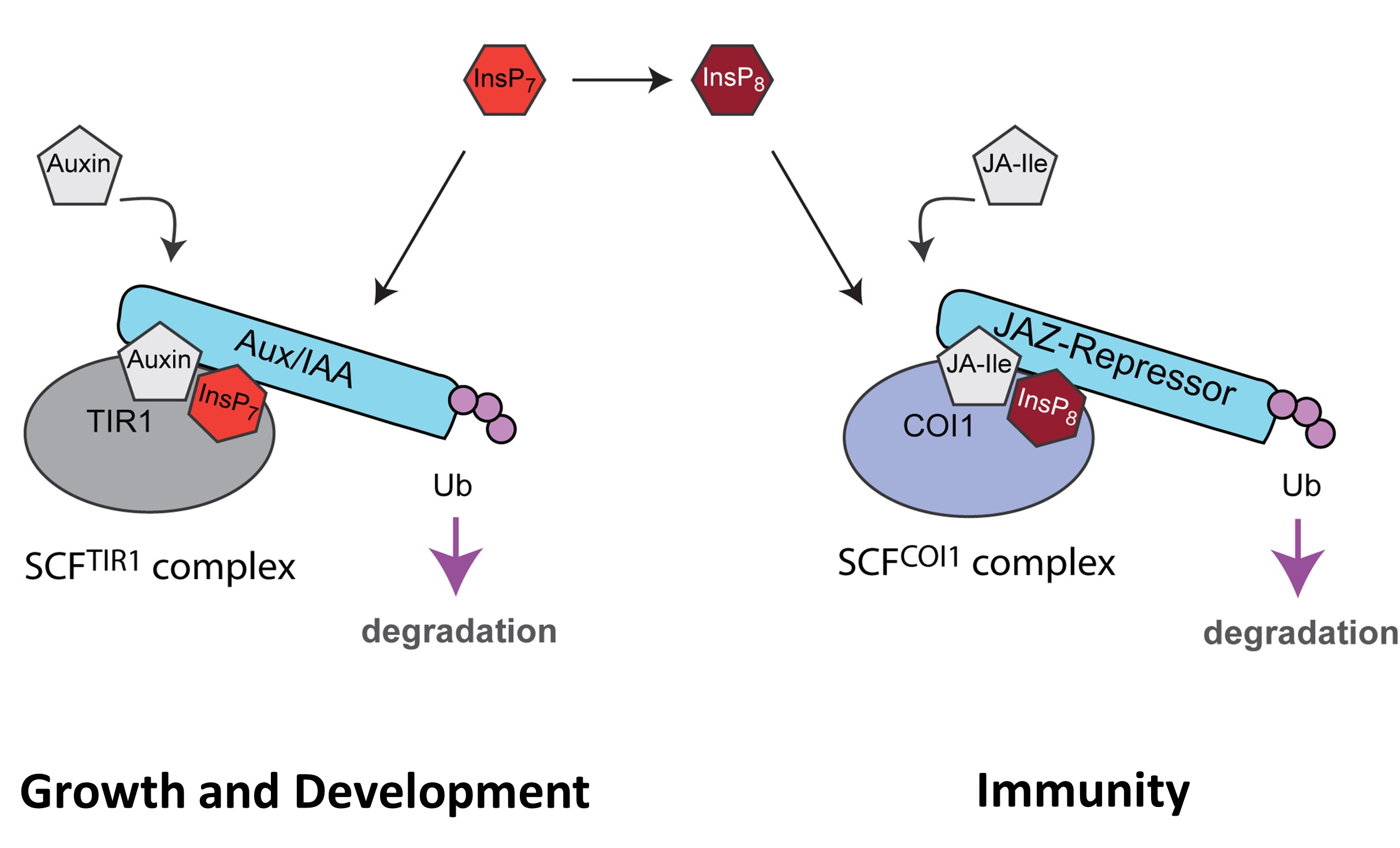Debabrata Laha

Debabrata Laha
Assistant Professor
Ph.D: University of Tübingen, Germany
Post-doctoral research:
1. University of Bonn, Germany
2. MRC-Laboratory for Molecular Cell Biology, University College London, UK
Year of Joining: 2020
Phone: +91 80 22932538
Email: dlaha@iisc.ac.in
The broad interest of our laboratory is to investigate the signaling role of inositol phosphates in plants.
Highlights
- We would like to understandhow inositol phosphates are produced and maintained inside the cell and what are their physiological functions.
- We also explore the molecular basis of inositol phosphate action.
All organisms need to adapt in an ever-changing environment for their survival. Land plants, being non-motile organisms, face unique challenges to both abiotic and biotic threats since they lack “escape strategies” of mobile organisms. To cope with these threats and integrate both external and internal cues that alloweffective responses,plants have evolved a plethora of interconnecting signaling networks. One of these sophisticated intracellular signaling pathways stems from phosphorylated derivatives of myo-inositol (referred simply as “inositol”). Membrane-resident phosphoinositide and soluble inositol phosphate (InsP) are the best characterized inositol-derived signaling molecules. We are particularly interested in the functional characterization of inositol phosphates in plants.

The fully-phosphorylated form of inositol, InsP6 also known as phytic acid, is the major phosphate storage molecule in seeds andchannelsphosphorous, inositol and minerals during germination and growth. InsP6 also acts as a signaling molecule both directly by controlling a wide range of cellular processes or indirectly, as a precursor of the more phosphorylated molecules InsP7 and InsP8, commonly known as inositol pyrophosphates (PP-InsPs). PP-InsPs are distinct from other InsP molecules by the presence of one or more high energetic diphospho-/pyro- moieties. They orchestrate a plethora of cellular functions including DNA repair, insulin secretion, apoptosis and phosphate homeostasis. In recent years, research into PP-InsP functions has become one of the most dynamic and evolving areas of signal transduction.
Along with others, we identified PP-InsPs in different plant species and unveiled some of their physiological functions including plant immune responses, growth and development and phosphate homeostasis (Laha et al., ACS Chem Biol 2019; Laha et al., bioRxiv 2019, Laha et al. Plant Cell 2015; Laha et al., Plant Phys 2016; Blüher* Laha* et al., Nature Comm 2017, Riemer et al., bioRxiv 2019). While these set of studies have been instrumental in understanding some of the physiological functions regulated by PP-InsP in plants, the molecular mechanisms through which PP-InsPs control these cellular processes remains largely unknown. The major focus of our laboratory is to understand how PP-InsPs are synthesized and maintained in plant cell and how they orchestrate physiological functions.We will carry out interdisciplinary work that combines biochemistry, biophysics, cell biology, genetic analyses and computational work to delineate the precise mechanism of how an inositol pyrophosphate executes its biological function in a model plant.
- Har Gobind Khorana-Innovative Young Biotechnologist Award
- Infosys Young Investigator Award
- R. Yadav, G. Liu, P. Rana, N. Pullagurla, D. Qiu, H. Jessen, D. Laha*. (2025) Conservation of heat stress acclimation by the IPK2-type kinases that control the synthesis of the inositol pyrophosphate 4/6-InsP7 in land plants. PLOS Genetics. PMID: 40934223 https://doi.org/10.1371/journal.pgen.1011838
- P. Rana, A. Edathil Kadangodan, P Koley, R. Ghosh, N. J. Pullagurla, H. C. Naik, P. Mondal, S. Gayen, D. Laha*. (2025) GA-independent DELLA regulation by inositol pyrophosphate in a non-vascular land plant. Nature Chemical Biology. PMID: 40745478, https://doi.org/10.1038/s41589-025-01961-w
- N. Pullagurla, S. Shome, G. Liu, H. Jessen, D. Laha*. (2024) Orchestration of phosphate homeostasis by the ITPK1-type inositol phosphate kinase in the liverwort Marchantia polymorpha. Plant Physiology, https://doi.org/10.1093/plphys/kiae454
- K. Chalak, R. Yadav, G. Liu, P. Rana, H. Jessen, D. Laha*. (2024) Functional Conservation of the DDP1-type Inositol Pyrophosphate Phosphohydrolases in Land Plant. Biochemistry https://doi.org/10.1021/acs.biochem.4c00458
- D. Blüher*, D. Laha*, et al. (2017) A 1-phytase type III effector interferes with plant hormone signaling. Nature Communications 8: 2159. doi: 10.1038/s41467-017-02195-8. (*equally contributing authors)
- D. Laha, P. Johnen, et al. (2015) VIH2 controls biosynthesis of the Inositol Pyrophosphate InsP 8 and Regulates the Wound Response in Arabidopsis thaliana. The Plant Cell 27. 1082-1097
PhD students
Pullagurla Naga Jyothi (MSc Biochemistry; August 2020)
Ranjana Yadav (MSc Botany; August 2020)
Priyanshi Rana (MSc in Biochemistry; August 2021)
Supritam Shome (Int. PhD; August 2021)
Riya Ghosh (MSc Botany; August 2022)
Kuheli Chalak (MSc Life Sciences; August 2023)
Akhila Jayamon (MSc Botany; August 2024)
Openings